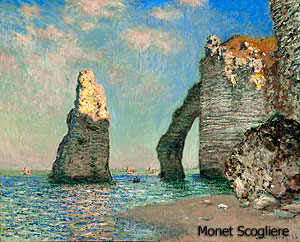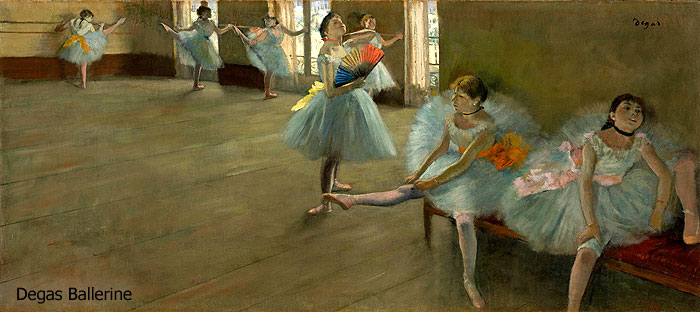 Recently, there is a lot of speculation about the ‘Doomsday’. If the world is ending or not – is still an outlook, so we have to wait and watch. But how we have evolved from our past is remarkable. I always have this paradoxical feeling between life with and without modern technology, we are in the generation of advanced technology and life seems impossible without it. But art was at its peak even without high-technology or lightning electricity. I am speaking about the ‘Impressionist Period’. Impressionist painting remains the most attractive period in the history of modern art and the most appreciated by the public.
Recently, there is a lot of speculation about the ‘Doomsday’. If the world is ending or not – is still an outlook, so we have to wait and watch. But how we have evolved from our past is remarkable. I always have this paradoxical feeling between life with and without modern technology, we are in the generation of advanced technology and life seems impossible without it. But art was at its peak even without high-technology or lightning electricity. I am speaking about the ‘Impressionist Period’. Impressionist painting remains the most attractive period in the history of modern art and the most appreciated by the public.
At the ‘Palazzo Reale’ Milano there is a display of French Impressionist Art from the collection of Robert Sterling Clark who was the grandson of a founding partner of the singer sewing machine company. He grew up in a wealthy New York family with parents who were themselves art collectors and patrons. Clark began seriously acquiring art in 1912, when he was thirty-five years old. As a collector Clark was a maverick, disregarding the fashions of the art world and describing art historians as ‘lacking entirely an eye that appreciates what is good.’

He is best known for collecting Impressionist Art from the 19th century, but he also showed interest in the Renaissance paintings. Clark was self-trained connoisseur, learning through reading, visiting galleries, attending auctions and developing relationships with art dealers-most notably the Durand-Ruel family. Interestingly he also relied deeply on the opinion of his wife Francine. He once described her as ‘an excellent judge, much better than himself at times’ also referring her as ‘touch stone in judging pictures.’
A mere six months after the opening of the Institute in 1955, Sterling Clark died, having amassed over three hundred paintings, many of which are considered masterpieces. And speaking about these great French paintings in the second half of the 19th century represent a crossroads in the history of art. This was a period of change and experimentation, even revolution, in society and politics as well as in the arts. For many painters, the tradition of the grand manner inherited from the Old masters and sanctioned by the Academie des Beaux Arts and its official Salon exhibitions, remained the highest calling for art. Others rejected the techniques and subjects of past art and sought to define a new painting based in nature and dedicated to representing the rich variations of the modern world.

The most significant of these avant-garde artists were soon known as the Impressionists, who often painted en plein air to capture the fleeting effects of light and shadow. Unlike academic painters the impressionists wanted to paint modern subjects in a unique manner to be distinguished. Frequently rejected by the academicians and the Salon juries, they decided to work together and started organizing independent exhibitions. This was a vast factor that changed the whole modern art era. These exhibitions presented extraordinary master pieces, decorative and evocative paintings of the fin-de-siècle.

The core of the Clark collection however remains a large group of paintings by the most eminent artist of the Impressionist Period. Like Edouard Manet, Claude Monet, Camille Pissarro, Alfred Sisley, Edgar Degas, Berthe Morisot and Pierre-Auguste Renoir. Their collections were from every Impressionist category landscape, portraits, nudes and still life pictures. But Renoir remained the favorite for them and they eventually acquired thirty nine of his paintings.
Posted by : Amal Kiran Jana from Milan at 10:19AM














































